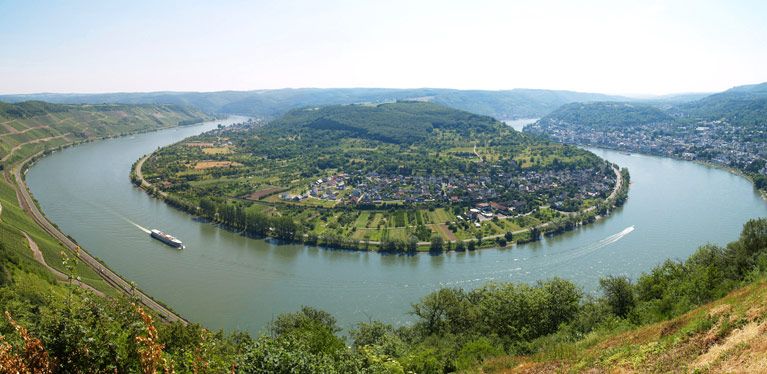Romantic Rhine River
Romantic Rhine – World Heritage Site and the stuff of legends
The Rhine – a river steeped in romance, myths and legends. Rheingold and the Ring of the Nibelung, the Loreley Rock, the folklore of medieval castles - it’s all there, carried on the currents past the impressive scenery.Since the ancient Germanic tribes halted the advancing Romans on the east bank, “Father Rhine” and German history have been inseparably entwined. The Romans are gone but the challenges, such as mastering the curves on the 200-kilometre road trip from Mainz to Bonn, remain. Cruise through the iconic Rheingau and central Rhine wine regions where delicate white wines and local delicacies await you. It goes without saying though that indulging in the sumputuous wines are for passengers only; drivers can contend with drinking in the scenery.
Explore the outstanding and dramatic scenery of the Oberes Mittelrheintal, a designated UNESCO Heritage Site full of craggy castles and palaces perched above near-vertical sloping vineyards dropping towards the river.
Book a rental car now and explore Germany
Mainz: The Holy See on the Rhine
Before heading off in the car, a walk around Mainz is time well spent. The imposing cathedral is a powerful illustration of the important historical significance of Mainz. Apart from Rome, only the Diocese of Mainz bears the name “Holy See”.Mainz has also gone down in history as the place where Johannes Gutenberg honed his printing skills. Visit the Gutenberg Museum and learn about the historical beginnings of book printing.
The St.-Stephan-Kirche above the old town is the home of a priceless treasure: the stunning stained-glass windows by Marc Chagall, depicting Biblical scenes were created by the artist in the 70s and 80s.


The Rheingau region: home of fine wine and culinary delights
Cross the Rhine in Mainz and bear right on the road beside the river towards Rüdesheim, through places such as Eltville, Oestrich-Winkel and Geisenheim, all steeped in wine-making history. Welcome to the Rheingau, a small but legendary wine region.While in Rüdesheim, don’t miss the chance to taste test the local vintages at first-class wineries such as Josef Leitz, Georg Breuer or August Kessler. Rüdesheim has only 10,000 inhabitants and you’ll enjoy a pleasant stroll through the cosy old town, admiring the magnificent medieval half-timbered houses like the Klunkhardshof and the Adelshöfe.
Your visit to the area simply wouldn’t be complete without stopping off for a tour of the Benedictine abbey of St Hildegard. The abbey is nestled among the vineyards above Rüdesheim, in a truly idyllic location with sweeping views over the Middle Rhine valley.
Bingen and Rheinstein castle: there’s a hole in the Rhine
The next day, take the ferry just after leaving Rüdesheim and cross the Rhine from Hesse to Rheinland-Pfalz. Until the 17th century, rocks made the Rhine impassable near Bingen, forcing ships to stop and unload their cargo. The rocks were later removed with explosives, which was so successful that it created the so-called Binger Hole.The town skyline is dominated by Klopp Castle which was built in the 13th century. The castle tower is open from April to October and the climb is well worth it, with stunning views over Bingen and the Middle Rhine.
Bingen is a small town that benefits from its prime location close to many of the castles dotted among the hills near the Rhine, with Rheinstein Castle being one of the most outstanding examples. Built as a fortified castle in the 14th century Rheinstein has had a chequered history and fell into disrepair before being restored in the 19th century. Today, Rheinstein is privately owned and visitors are welcome to stop and take a tour. The castle is one of the most impressive examples of the “Romantic Rhine” movement popular in the arts and architecture during the 19th century.
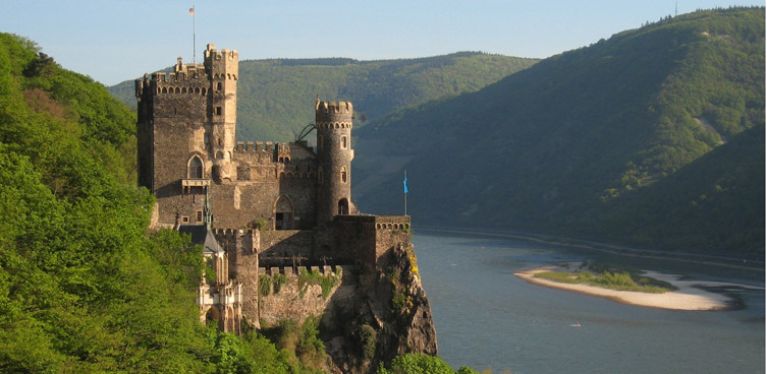

Travel tip: from Bingen to the Loreley
Take the B9 towards Bacharach, gateway to the Oberes Mittelrheintal, designated a cultural landscape and World Heritage Site by UNESCO. Start on the road that hugs the west bank, follow the river as it cuts a path through the Rhenish slate mountains to Bacharach, a fairy-tale jewel with idyllic narrow lanes crammed with half-timbered houses.Stahleck Castle is a local attraction and worth a visit. Now a youth hostel where travellers enjoy the local hospitality, these sturdy walls were originally built as a fortress by the Wittelsbach dynasty.
Continue north on the B9 as far as Kaub, where you take the car ferry across to the eastern side of the river. From the ferry, keep a look out for picturesque Pfalzgrafenstein Castle, which is in the middle of the river and was a customs station until the 19th century.
After safely crossing the Rhine, take the B42 to Loreley. This massive 132-metre tall outcrop of slate has become one of the most iconic symbols of German cultural history: in years gone by, the treacherous currents around the Loreley were the cause of many shipwrecks.
The poetry of the Romantic period depicted the Loreley as a maiden whose siren songs lured sailors to their death. Today you can safely approach the Loreley and admire the stunning view from the visitor centre on top of the rocky outcrop.
Koblenz: Germany’s famous corner
Enjoy the stellar scenery on the remaining 40 kilometres to Koblenz. One of the highlights is the spectacular 180-degree horseshoe bend in the Rhine at Filsen. Koblenz is home to Germany’s most famous corner. The “German Corner” is at the confluence of the Rhine and Moselle, a man-made spit of land dominated by a mighty statue of Kaiser Wilhelm I, Germany’s first Kaiser.Koblenz is one of Germany’s oldest cities and steeped in history and tradition, explore some fascinating examples in the Electoral Palace, Ehrenbreitstein Fortress and Stolzenfels Castle .
The new Forum Confluentes centre is a must-see, it includes the Middle Rhine Museum and the Romanticum exhibit. Here you can find out what the mythical "Romantic Rhine“ movement was all about. Could there be any better place than Koblenz to take a boat trip? A number of travel companies arrange day trips on the Rhine and Moselle.
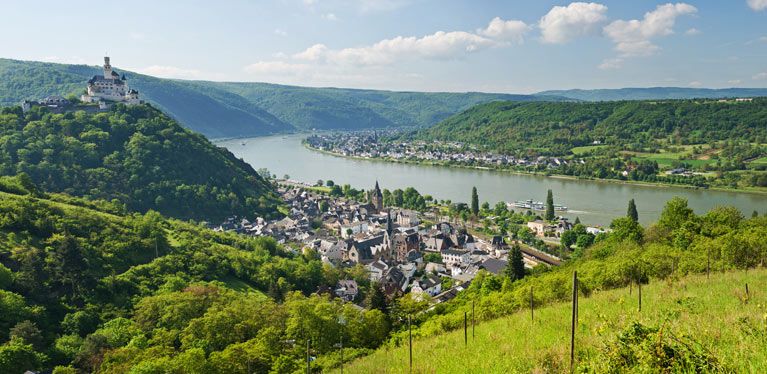
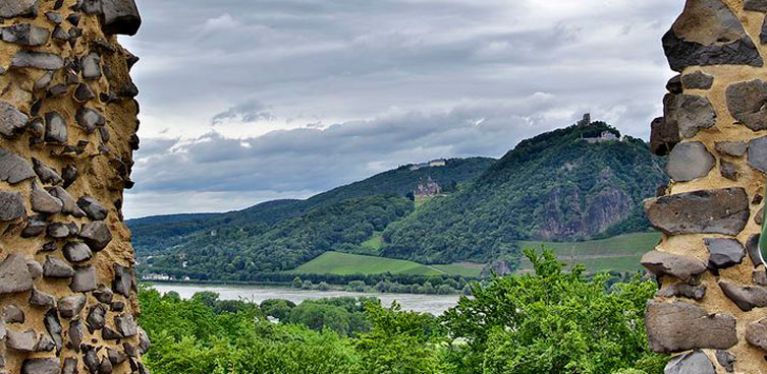
Königswinter and Drachenfels Hill
On the way to Königswinter, the Rhine takes a more sedate and direct route again. This section of the river may not offer such spectacular, breathtaking bends and loops, but other attractions await, such as a relaxing pit stop in Linz am Rhein, one of the many picturesque towns along the river.The absolute highlight of this section has to be Drachenfels Hill. Rising 320 metres behind Königswinter, a ruined castle perched on the top of the picture-postcard Drachenfels affords stunning vistas of the surrounding area.
From the viewing platform on a clear day, you can even spot the spires of Cologne Cathedral on the horizon. If you are not up to hiking to the top, you can take the mountain railway from Königswinter. Schloss Drachenburg is situated slightly lower down the rock. This impressive structure built in the historic palace style was constructed in the late 19th century and is open to visitors who can enjoy the exhibition of the castle’s history.
A visit to one of the wine bars in the Königswinter area is the perfect way to relax after a busy day of sightseeing.
Bonn: art and recent German history.
Things are a little quieter these days in Bonn, the former West German capital. Yet although the national government moved to Berlin back in the 1990s, Bonn’s cultural scene is as vibrant as ever. Bonn is home to two of Germany’s top-rated museums, the Haus der Geschichte, a museum of post WWII history, and the Bonn Kunsthalle, an art museum. A great way to get your bearings and explore the city is the Beethoven Tour, a 16-stop route tracing the life and work of the great German composer, who was born in Bonn.Then visit the Chancellor’s Bungalow and soak up some of the unique atmosphere of post-war Bonn. The Federal Chancellor’s residence was built in the 1960s, but the modern, functional and thoroughly unassuming architectural style got mixed reviews from the bungalow’s residents.
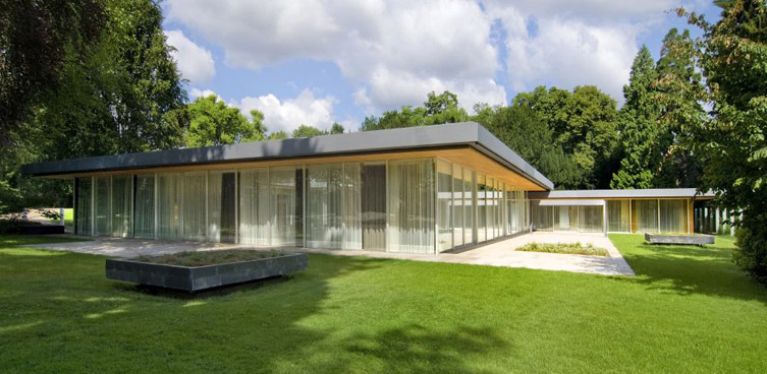
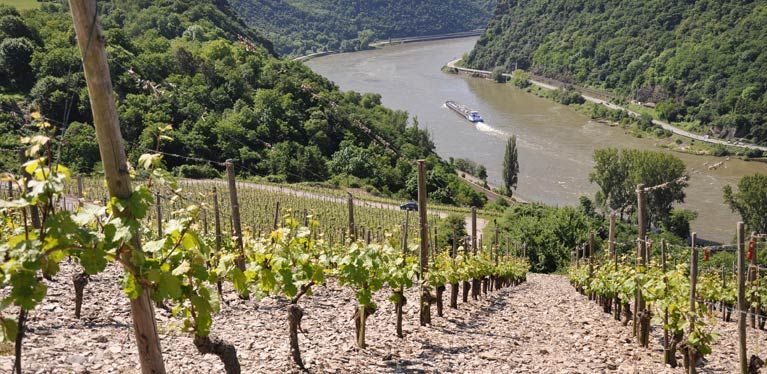
Other top-rated vineyards in the Rheingau and Mittelrhein regions
Wine and Rhine, a match made in heaven. The Rheingau and Mittelrhein regions are home to numerous top-class wineries, which produce limited quantities of excellent vintages from their steep, terraced vineyards. Here is a short list of recommended wineries where you can stop, taste and buy, directly from the source:Travel tip: events on and around the Rhine
The Rhine is the centrepiece of numerous exciting events throughout the year, including the spectacular "Rhein in Flammen“ fireworks display, music festivals and culinary festivities.We would recommend that you do some research before your trip to find out what is going on and where.
